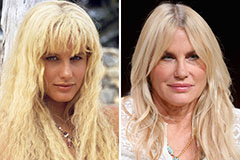Inside the annals of expert fumbling background, few championship belts stimulate the same sense of eminence, splendour, and legendary standing as the WWF Winged Eagle Champion Title Belt. Introduced throughout a crucial period for the World Fumbling Federation (WWF), this specific layout not just stood for the pinnacle of wrestling success but additionally ended up being completely related to some of the largest names and many unforgettable moments in the sport's background. The WWF Winged Eagle Belt transcended its function as a plain reward; it came to be a sign of excellence, a tangible representation of a champ's hard work, devotion, and supreme accomplishment within the squared circle. Its visual appeal, combined with the epic figures who happily used it around their waists, strengthened its location as one of the most cherished and instantaneously recognizable championship layouts in the entire sector.
The late 1980s noted a duration of explosive development and mainstream popularity for the WWF, mainly fueled by the charisma of Hunk Hogan and the burgeoning "Rock 'n' Fumbling" age. As the firm's presence and fanbase expanded, there was a need for a champion belt that not only looked respected however also visually symbolized this brand-new era of larger-than-life characters and captivating storylines. The existing WWF Championship belt, while iconic in its own right, awaited an update that would resonate with the advancing visual of the promo.
The WWF Winged Eagle Belt made its debut in very early 1988. While the exact date of its unveiling is usually discussed among wrestling chroniclers, it is commonly approved that Hulk Hogan was the initial to wear this new style after retaining his WWF Champion. The belt was a significant separation from its predecessor, flaunting a much more detailed and aesthetically striking look. The focal point of the design was a large, intricately detailed gold plate including a stunning eagle with its wings fully outstretched, holding a banner that proudly displayed the WWF logo design. This main picture radiated power, flexibility, and dominance, completely straightening with the larger-than-life characters that controlled the WWF landscape at the time.
Flanking the main eagle were smaller, luxuriant side plates. These side plates were not initially personalized with the champion's name, a feature that would certainly become much more common in later champion layouts. Instead, they commonly included globe styles or further decorations that contributed to the general regal appearance of the belt. The leather strap of the WWF Winged Eagle Belt was normally black, offering a plain contrast to the gleaming gold of home plates and further highlighting their complex detailing.
The visual effect of the WWF Winged Eagle Belt was obvious. Its dimension and fancy layout made it immediately identifiable and a sought after reward for any type of wrestler desiring reach the top of the WWF. It appeared like a champion, carrying an air of relevance and symbolizing that its owner was really the most effective in the world. This aesthetic allure played a important role in raising the condition of the WWF Championship and making it a sign that fans might readily identify with and aspire to see their favored wrestlers hold.
Past its aesthetic appeal, the WWF Winged Eagle Belt came to be associated with an era of epic champs and memorable storylines. Following Hulk Hogan's preliminary regime with the title, a who's that of battling icons proudly lugged this variation of the championship. "Macho Man" Randy Savage, with his flamboyant design and intense in-ring personality, included one more layer of reputation to the WWF Winged Eagle Belt during his remarkable regimes. The Ultimate Warrior, with his impressive power and enthusiastic link with the audience, likewise held the title, more sealing its importance during the height of his popularity.
The early to mid-1990s saw the WWF Winged Eagle Belt stay the ultimate reward, put on by technical wrestling masters like Bret " Hit Man" Hart, whose powers were identified by intense in-ring competitors and a strong link with the wwf winged eagle belt faithful WWF fanbase. Shawn Michaels, "The Heartbreak Youngster," also held the title throughout this duration, showcasing his unbelievable athleticism and charm while bring the legendary belt. Each of these champs brought their unique style and personality to the forefront, further improving the tradition and prestige associated with the WWF Winged Eagle Belt.
Even as the WWF transitioned right into the edgier and even more rebellious " Mindset Era" in the late 1990s, the WWF Winged Eagle Belt remained the leading prize. " Rock Cold" Steve Austin, the anti-establishment icon who specified the age, famously held this version of the champion prior to it was ultimately changed with the "Big Eagle" style in late 1998. Austin's intense attitude and defiant character, integrated with the graph of the WWF Winged Eagle Belt, developed a effective photo that reverberated deeply with the transforming preferences of the wrestling audience. He was the last full-time WWF Champ to wear this design, noting the end of an era for this certain model of the title.
The tradition of the WWF Winged Eagle Belt extends much past the wrestlers who held it. It represents a golden era for the WWF, a duration of considerable growth and cultural influence. The belt itself has ended up being a treasured artefact for battling fans, often showing up in historical retrospectives, documentaries, and product. Its famous style continues to stimulate fond memories and appreciation amongst those that observed the age it defined.
Finally, the WWF Winged Eagle Wrestling Champion Title Belt holds a special area in the hearts of wrestling fans worldwide. Its majestic style, including the powerful winged eagle, completely caught the spirit of a transformative period for the WWF. A lot more notably, it was the symbol of success for a generation of famous wrestlers who mesmerized audiences and left an indelible mark on the industry. The WWF Winged Eagle Belt is more than simply a champion; it is a ageless icon, representing the pinnacle of success and a valued item of expert fumbling history. Its photo continues to be quickly identifiable and remains to be commemorated as one of the greatest championship layouts of all time.
 Danny Tamberelli Then & Now!
Danny Tamberelli Then & Now! Ariana Richards Then & Now!
Ariana Richards Then & Now! Bo Derek Then & Now!
Bo Derek Then & Now! Daryl Hannah Then & Now!
Daryl Hannah Then & Now! The Olsen Twins Then & Now!
The Olsen Twins Then & Now!